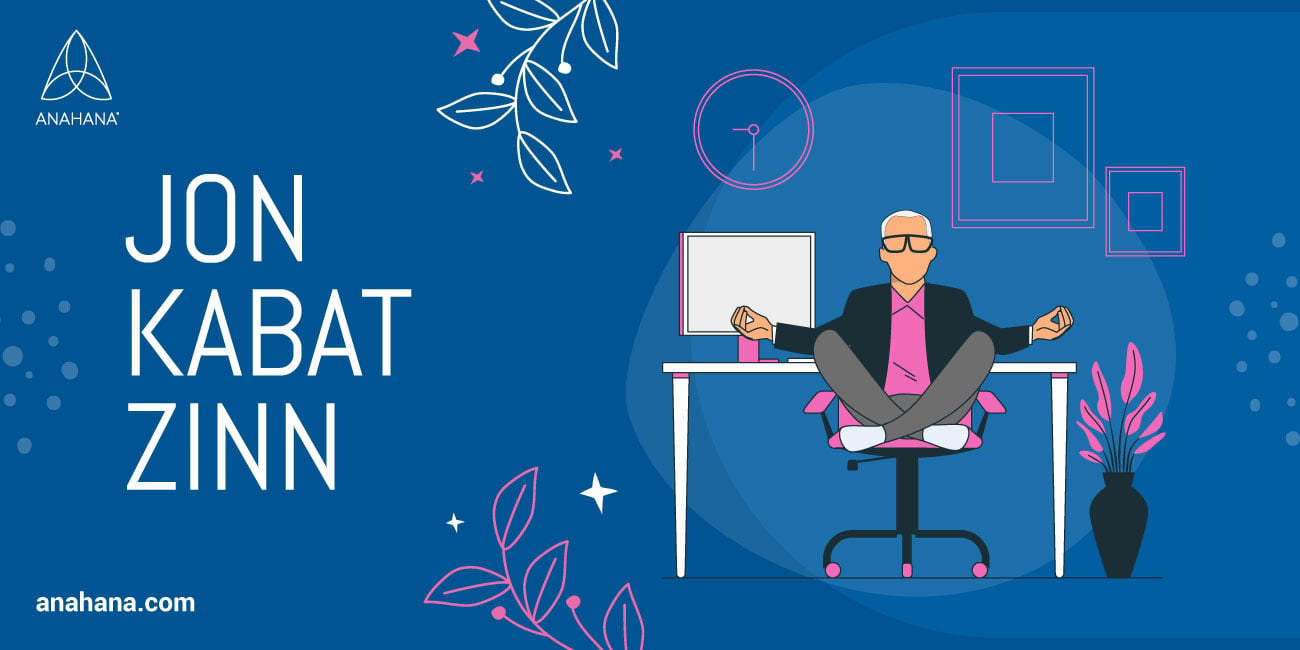Kindness
Kindness means a state of behavior marked by generosity, helpfulness, and consideration without expecting anything in return. It is a positive,...
Mindfulness meditation is a mental training practice dating back to 5,000 BCE. It teaches one to slow down thoughts by focusing on the physical self. By becoming fully aware of the body and mind, and fully tuning in to how one is feeling, the entire self will relax.
 Various meditation techniques are classified as mindfulness meditation, which often includes a combination of deep breathing and isolating awareness. Dedicating half an hour a day to mindfulness activities or incorporating them during daily activities can lead to extensive benefits for the self.
Various meditation techniques are classified as mindfulness meditation, which often includes a combination of deep breathing and isolating awareness. Dedicating half an hour a day to mindfulness activities or incorporating them during daily activities can lead to extensive benefits for the self.
This article explores the science behind mindfulness to outline how it works to improve the body. It also investigates several of the benefits that one may acquire through regular practice, and several of mindfulness exercise variations. Continue reading to begin your journey to improving your well-being today.
Mindfulness supports and enhances mental and physical well-being. According to PubMed, mindfulness is beneficial for self-awareness, emotional control, and self-regulation. Research suggests that changes in the brain's structure are related to mindfulness. The anterior cingulate cortex is a region in the brain associated with attention and has positive changes in response to meditation in terms of activity and structure.
Meditation reduces stress and regulates emotions. Mindfulness meditations engage the fronto-limbic networks in the brain, allowing for improved management of intense emotions. Further, mindfulness can support one’s ability to be aware. This may alter the default mode networks in the brain that support self-awareness, helping people be more mindful in their everyday lives.
Mindfulness practice can help treat clinical disorders that sacrifice individual well-being. Further research into meditation is required to validate previous findings and further understand the science behind how the method is beneficial for one’s well-being. Overall, large-scale brain networks support the mental state achieved through mindfulness.
Practicing mindfulness meditation for just a few minutes has extensive advantages for the mind, body, and soul. Here are four of the many benefits you may develop through regular practice:
A systematic review published by PubMed found evidence that mindfulness is associated with decreased pain. This research suggests activating specific mind areas through mindfulness helps the body process pain, supporting pain reduction and intensity.
One study published by PubMed found that a brief mindfulness meditation practice multiple times per week can improve stress and well-being, with potentially lasting effects. It allows one to access a deep state of relaxation. Further, data suggest that meditating reduces cortisol - a hormone deeply linked to stress.
According to a study published by PubMed, there is evidence that mindfulness can improve and can treat aspects of sleep disturbance while preventing daytime fatigue. Research suggests that meditating enhances melatonin production, a critical hormone essential for rest. It helps people fall asleep faster, preserves deep sleep, and enhances rapid eye movement (REM) sleep states.
 The effects of mindfulness improve symptoms of anxiety and depression. Data from a randomized control trial of mindfulness meditation on individuals with anxiety disorder and depression suggests that the intervention led to significant improvement. It changes the way that the mind reacts to stress and anxiety. For example, it overrides triggers that the prefrontal cortex and amygdala stimulate so one can respond in a calm and content fashion.
The effects of mindfulness improve symptoms of anxiety and depression. Data from a randomized control trial of mindfulness meditation on individuals with anxiety disorder and depression suggests that the intervention led to significant improvement. It changes the way that the mind reacts to stress and anxiety. For example, it overrides triggers that the prefrontal cortex and amygdala stimulate so one can respond in a calm and content fashion.
This practice has one focus on the senses of breathing, incorporating deep breathing to relieve stress and clear the mind instantly. Begin by finding a tranquil space and preparing for the practice.
Sit tall in a comfortable position.
Slow your breathing and tune into the breath, feeling the air moving in and out of your lungs. The body will calm down.
As the mind wanders or takes notice of sounds coming from the next room, be patient and gently bring it back to focusing on the breath.
Stay here for five to seven minutes.
Slowly open your eyes and continue with the day.
Body scan meditation practice is an effective mindfulness-based stress reduction technique. It has the practitioner involve themselves in the present moment and complete a scan and sense the entire body.
Begin by sitting down or lying comfortably on the floor.
Take a few deep breaths to ground yourself and calm the body.
Move your attention through the body. Begin either at your feet and work your way up, or at your head and work your way down.
Take time to concentrate on each body part, exposing stiff areas and lingering sensations. Savor each feeling.
If your mind wanders, whether with worry, stress, or fear, approach this with non-judgment and turn your focus back to the body.
When the scan is complete, take a moment to acknowledge your body as a whole.
This practice has one manifest positive feelings of love to others, oneself, and the world around you. Evidence suggests that those who regularly practice this meditation develop greater compassion, forgiveness, acceptance, etc.
Sit in a comfortable position, elongate your spine, close your eyes, and start breathing deeply.
Imagine yourself experiencing complete inner peace and overall well-being. Feel unconditional love for yourself and all you are, knowing that you are enough and are just right. Feel completely content and calm as you breathe in feelings of love and breathe out tension and negativity.
Next, repeat several loving mantras to yourself. Here are some examples, but feel free to choose your own:
May I be safe
May I be healthy
May I live with ease and happiness
May I give and receive appreciation today
This mindfulness practice teaches people to take notice of thoughts that arise and label them (potentially as positive or negative) without judgment. It helps one view thoughts and feelings objectively so they can learn and adapt, helping develop a stronger sense of self.
Find a comfortable position to settle into, feeling the entire body.
Turn your attention to the breath, feeling your belly rise and fall as you breathe in and out. Use this as an anchor when the mind starts to wander.
When ready, let go of your body and breath, and allow thoughts and emotions to enter the mind. Try not to get carried away by your thoughts, but simply observe them.
Rest comfortably on the bank of thoughts and acknowledge them without judgment or concern. Allow the thoughts and emotions to come and go. Potentially, picture them floating down a stream of water like leaves, and watch as they enter and exit your mind. View these objectively and see what you can learn from them.
When content with the practice, simply return your attention to the body's breath before coming back to complete consciousness.
Here are six basic steps you can take to prepare for mindfulness meditation:
Find a quiet space.
Get comfortable in a desirable position, either on the floor or on a chair.
You may wish to set a timer to indicate the end of your meditation.
Turn your awareness to your breath.
Notice thoughts as they come and let them float away.
Consider using guided meditation through an app or podcast.
Mindfulness meditation originated from Buddhist philosophy, dating back close to 2500 years. However, the practice was only introduced to the western world in 1975 by Jon Kabat-Zinn.
Having a busy schedule can make it hard to fit mindfulness into the day. In between work, taking care of your kids, and running errands, we are rarely given a moment for ourselves. If you can’t find a break in your day, there are ways to incorporate mindfulness meditation into everyday life activities. Here are some activities you can use to concentrate on the physical body and breath:
Brushing your teeth
Doing laundry
Driving
Tucking kids into bed
Doing dishes
Exercising
During these daily exercises, shift the awareness inside and clear the mind. Try to focus purely on the breath, the physical body, or the activity you are partaking in. This is an excellent way to start the practice of mindfulness meditation.
How Meditation Helps With Stress
How Meditation Changes The Brain
Less stress, clearer thoughts with mindfulness meditation – Harvard Gazette
The neuroscience of mindfulness meditation
Mindfulness Meditation for Chronic Pain: Systematic Review and Meta-analysis
What Is Mindfulness Meditation?
%20pinterest034d.jpg?width=740&name=Mindfulness%20Meditation-SUBWIKI_Four%20Mindfulness%20Meditation%20Practices%20to%20Try%20Today%20(Infographic)%20PINTEREST.png)

Kindness means a state of behavior marked by generosity, helpfulness, and consideration without expecting anything in return. It is a positive,...

Creating abundance is by shifting the mindset to focus on the things to be grateful for, joy, and presence in the moment through affirmations.

Meet the man at the forefront of the stress reduction battle using mindfulness and meditation.